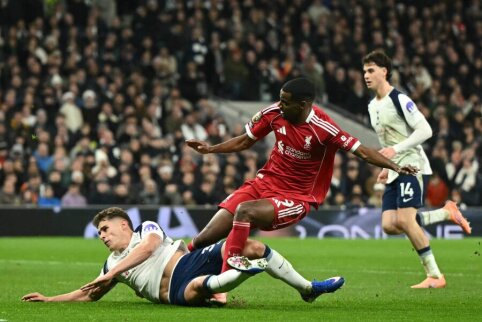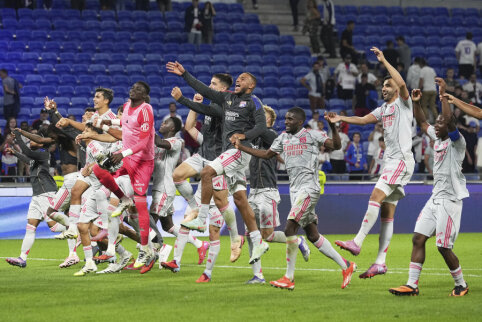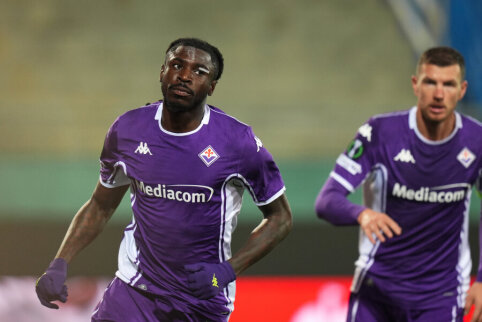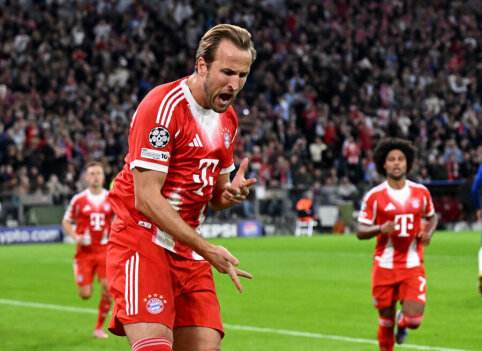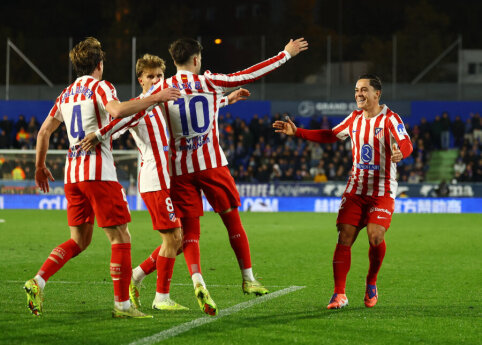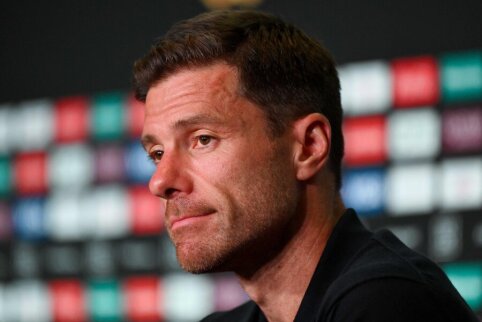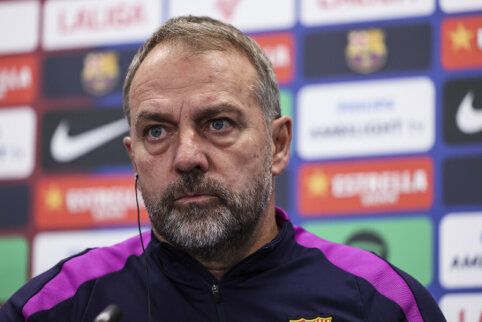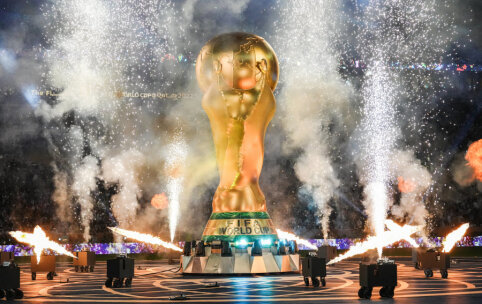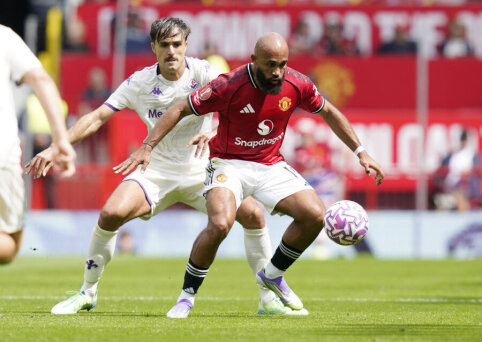 © EuroFootball.com
© EuroFootball.com
In the column "Tribune," continuing the theme of the club's history, website visitor Ernestas suggested an article by aviation enthusiast Arnold about the team's plane crash in Munich. Although the author focuses more on various aviation subtleties, for those who want to get acquainted more closely with one of the most famous football tragedies, we publish this article for your attention.
At the beginning of the 1950s, "Manchester United" was considered the best football club in England. The famous offspring of Matt Busby were known as the "Busby Babes." They mercilessly crushed all their opponents on any European field. On February 5, 1958, in Belgrade, they played a draw (3-3) with "Crvena Zvezda" in the semi-finals of the European Cup. The previous victory against the Yugoslavs (2-1) gave "Manchester United" the right to play in the final, which was scheduled to take place in Milan. However, a new challenge awaited them – a match against the "Wolves" team in the English top football league. In a fierce battle, the new English champion was to be revealed. Therefore, the coaches and players of "Manchester United" hurried back from Belgrade to have enough time for rest and preparation for the decisive match.
"British European Airlines (BEA) allocated a 47-seat "Airspeed Ambassador" aircraft for the flight. It was an elegant high-wing twin-engine monoplane with an unusual triple tail fin. Due to its luxurious finish, it was also called "Elizabeth" (after the reigning queen). The flight distance of the "Ambassador" was too short to cover the distance from Belgrade to Manchester without a stopover, so an intermediate landing in Munich was planned. The plane was piloted by experienced airline pilots Captain James Thain and Kenneth Rayment. The plane easily took off from Belgrade airport's concrete and, roaring, vanished into the greenish sky of Yugoslavia.
The atmosphere in the plane was cheerful. Along with the team traveling around Europe, many journalists and representatives of the English football league accompanied them. They had flown to similar matches before, so they knew each other well. The conversations constantly turned to the prospects of "Manchester" to win the championship. Every other glass of whiskey strengthened the belief in victory, so the plane cabin became increasingly noisy. A little further away from the heated company of footballers, five casual passengers were seated who urgently needed to be in London. Among them was a Yugoslav KGB attaché's wife with a baby. In total, 38 passengers were seated in the cozy "Ambassador" seats.
After two hours, the plane touched the Munich airport runway and at the same time, wet clumps of sprinkling snow "growths" appeared under the "Ambassador's" wheels. Just a few minutes ago, a snow flurry rushed over the runway, and low-hanging leaden clouds did not promise anything good to both pilots and ground airport services. The refueling took less than an hour, and the captains began inspecting the plane. Occasionally, moisture dripped, but the air temperature was around zero, so cheerful streams flowed from the rear wingtips. Thain and Rayment calculated that the takeoff and climb of the plane would not take much time, so the wings wouldn't have time to freeze. Due to the design features of the "Ambassador," the crew could not visually inspect the upper wing surface, and they simply did not bother to drag huge ladders, climb slippery stairs to once again confirm that in zero temperature, the ice melted - they simply didn't want to. Therefore, the pilots refused to spray the plane with anti-icing fluid and asked for permission to start the engines. It should be noted that their colleagues from other airlines were more cautious and started rolling only after being sprayed with ethylene glycol. They understood that when the airflow from the propellers began to blow on the wings, the stuck snow would become deadly dangerous ice.
The passengers took their seats again, and at 2:59 p.m., the "Ambassador" G-ALZU AS 57 started on the takeoff runway. Kenneth Rayment took the place of the captain. His colleague James Thain occupied the seat of the copilot. There was nothing unusual about it, except for one "but." The captain who led the "Ambassador" flight was James Thain, so he had to pilot from the left seat. However, he piloted the plane in the first part - from Belgrade to Munich. Now it was Rayment's turn – he had to fly the plane from Munich to London. According to the internal BEA rules, the captain of the aircraft always had to sit in the left seat. At the same time, there were no instructions in the aviation ministry's regulations on how to behave in cases where several crew members have the same rank as the captain and are equally experienced pilots. And Captain James Thain and Captain Kenneth Rayment had been leading other crews for a long time, so they had forgotten how to fly the "Ambassador" from the right seat. Furthermore, the plane's instrument panel was arranged in such a way that the pilot – navigation instruments part, necessary for climbing and cruising, was on the left side. What's more: James and Kenneth had been friends for many years, and their friendship was linked by a common hobby. It was poultry farming. They flew to Munich just for that, to talk about new breeds of chickens and the peculiarities of broiler breeding. Strangely, but the men piloting planes were interested even in birds unable to fly over a fence. Therefore, without words, Thain gave his seat to Rayment, and himself sat in the copilot's seat.
The "Ambassador" runway was covered with a 1.5 – 2 cm layer of wet snow. The gray surface darkened from the wheels of aircraft that had risen and descended until then. Having received permission from the dispatcher, Kenneth Rayment nudged the throttle lever, and the plane began to accelerate. One of the most unpleasant features of the "Bristol" engines was the increased sensitivity to the composition of the air-fuel mixture delivered to the cylinders. Even a slight oversaturation would lead to pronounced power fluctuations, which, in turn, would increase or decrease the engine's revs. If this phenomenon began during takeoff, according to the airplane's operating rules, the takeoff had to be interrupted (if possible).
Upon seeing the fluctuations of the left engine's manifold pressure gauge, Captain Rayment reduced the revs and informed James Thain about his decision to repeat the attempt after restoring normal engine revs. The radio operator requested permission for a repeat attempt, and the dispatcher agreed. He allowed a few minutes to return to the beginning of the runway and try to take off again. As the plane slowly moved on the wet snow towards the starting point, the pilots considered possible ways to solve the problem. In similar cases, sometimes a gradual increase in revs helped when the sector levers were pushed forward by a centimeter. This lengthened the acceleration path, but helped stabilize engine operation. While James Thain kept the trembling plane on the brakes, Rayment gradually increased the "Centaurus" revs. Everything seemed to be going well, and the plane was released from the "leash." And the manifold gauge started to jump again, so the attempt to take off had to be interrupted. The crew decided to return to the passenger terminal and inspect the engine. While the technicians checked the left engine, and the passengers spent time in the bar, special ground services inspected the takeoff and landing runway. The tower dispatcher reported that two-thirds of the runway was covered with a 2 cm thick layer of wet snow mixed with the tracks of ascending and descending aircraft wheels. The remaining third was untouched by snow. Interestingly, on that day, pilots of ascending aircraft felt intense braking and claimed that the snow cover was at least twice as thick as reported by the airport workers. Meanwhile, one of the footballers – Duncan Edwards, sent a telegram to his landlady in Manchester. In it, he wrote about the delay in Munich. It was received in Manchester after the disaster – at 5 p.m. "All flights are banned, we will return home tomorrow."
Having made sure that the engines were in good order and the passengers taking their seats in the cabin, they received permission to take off. At 2:59 p.m. the "Ambassador" stuttered at the start of the takeoff runway. James Thain, sitting in the copilot's seat, gradually increased the engine revs until he reached the takeoff mode. At 3:03 p.m. 609 ZULU gently moved from its position and started rolling on the concrete strip, raising fountains of slush. While investigating the causes of the catastrophe, the surviving passengers (many of them had traveled the world with their team and were knowledgeable in aviation as experienced pilots) claimed that this time the plane was moving much slower than usual. Despite James Thain's efforts, the left engine again "failed," but this time within acceptable limits, so the climb was continued.
Rayment led the aircraft along the runway center, while Thain regulated the engine operations and loudly reported: "Speed 100, 110, 120..." When the speed reached 120 km/h, the steering efficiency increased, and Rayment started steering the control wheel. "God loves the Trinity" - with a sigh of relief, the passengers thought they would finally take off this time. "Speed 150, speed 160..." Rayment gently tugged the wheel towards him, and as if lifting the heavy clouds, the "Ambassador" nose slowly lifted up. When the speed reached 185 km/h, Thain shouted, "V1!”, which meant that even if one engine failed, there was only one way left for the plane - up. There was no longer a way for a safe stop. Thain was already prepared to say the long-awaited "Rotation!", when an unknown force reached out and grabbed the "Ambassador" by the wheels. The plane had just reached a third of the untouched runway, which was covered with a thick layer of snow. Without any slack, the speed dropped - 180 km/h, 175, 170...
Instinctively, Thain increased the engine revs, while Rayment pressed the brakes. Now the lack of a single command was apparent in the crew. Both pilots were making decisions independently, without informing each other about their intentions. And there was nothing strange about that - for many years Rayment and Thain had flown as ship captains and had become accustomed to ordering their subordinates rather than being held accountable for their actions.
What thoughts were going through Rayment's head at that moment remained a mystery. However, within a few seconds, he stopped braking and, with all his might, pulled the wheel towards him, trying to tear the plane out of the snowdrift. The plane's nose rose even higher, but the main wheels continued to plow the snow field. Rayment yelled "Undercarriage!” ordering James Thain (the aircraft's leader!) to retract the landing gear and, in this way, try to reduce aerodynamic resistance. In theory, the "Ambassador" could fly at that speed if not for the ice that had formed on the wings after long taxiing along the runway and three unsuccessful attempts to take off. This considerably reduced the lifting properties of the wings, and the plane helplessly skidded above the ground. The passengers probably did not even understand whether they were flying or not. Where is the end of the runway? Has the speed dropped again? The answers to these questions were answered by the fence surrounding the airport. The "Ambassador" easily knocked it down, as if it were a matchbox, and moved towards the suburbs.
In the plane's path, there was a small farm surrounded by tall maples. All Rayment could do in this situation was try to avoid a direct collision with the tree and try to squeeze between the house and the nearest growing maple. He fully turned the wheel and the plane reluctantly veered to the right. They jumped over the tree at the same second a loud crash against the brick wall of a cottage was heard. A wing with an unlucky engine was detached from the plane and hit the house, causing the explosion. Immediately afterward, adjacent to the house were auxiliary buildings with gas.
The fuselage with a healthy right wing began to spin around its axis. Shortly after, another tree tore through the cockpit halfway. The remnants of the plane slid towards the garden. The collision with it put an end to the nightmare. After the impact, the fuselage broke in half, the nose of the plane plowed a 60-meter-long furrow in the ground and stopped in the middle of the field, while the remnants of the tail rested a few meters from the pile of trash that the owner proudly called a "garage.”
Thain escaped unscathed, but Rayment was severely injured. For a few seconds, no one, neither passengers nor crew members, moved. Everyone seemed frozen in place. Psychologists call this "negative panic" – one brain hemisphere decides what to do, while the other tries to figure out what happened. Flames quickly lit up the remnants of the plane. The first to recover was the radio operator, who reached the network protection switches on the plane and turned off power. Then he tried to enter the passenger cabin through the cockpit door, but it was blocked by luggage and handbags that folded forward when the plane hit the house. Thain began to provide first aid to the bleeding Rayment, but he ordered to save the passengers, and Thain had to slip out of the damaged cabin through the window.
Once on the ground, he saw a terrible sight: the front fuselage part, together with the right wing, was turned 90° to the direction of flight, lying on the frozen ground. Underneath the remaining wing, which contained about 2 tons of gasoline, a fire started. 20 of the 44 people on board (38 passengers and 6 crew members) were already dead. The groans of the injured were heard from the ruined cabin....
All this was recounted by Bill Foulkes: "The end of the aircraft just fell away. I ran as fast as I could. I ran and ran. Then I turned around and realized that the plane won't explode and I went back. On the way there, I saw the burning wreckage of the aircraft. I started running back. Roger Byrne was strapped to his seat, Bobby Charlton was lying motionless in another seat. Then Harry Gregg appeared, and we started to look for those who could still be helped. Two club members helped Matt Busby, who was severely injured, then Bobby Charlton recovered and joined the others."
At the onset of the fire, it was quickly extinguished – the rescue services were just a few hundred meters from the crash site. It took two hours for the rescuers to extract Captain Rayment from the wreckage. He was unconscious. He quickly hid the crash site from the eyes of the public with a thick, wet snowfall that started at that time. Several hours later, the chilling news spread around the world: no longer "Busby Babes"...
Roger Byrne, Geoff Bent, Mark Jones, David Pegg, Liam Whelan, Eddie Colman, and Tommy Taylor died instantly. Together with them, the club secretary Walter Crickmer, coaches Tom Curry and Bert Whalley, and one of the Manchester United directors also died. Duncan Edwards and Johnny Berry were severely injured and fighting for their lives. Matt Busby suffered multiple injuries and remained the only alive club staff member.
Also killed were eight out of nine journalists traveling together: Alf Clarke, Don Davies, George Follows, Tom Jackson, Archie Ledbrooke, Henry Rose, Eric Thompson, and the gentle giant Frank Swift. Among the deceased were two passengers: a tourist agent and a fan. Nine players survived, but two of them - Johnny Berry and Jackie Blanchflower - never played football again. Two photographers, the tourist agent's wife, and two Yugoslav passengers (one of whom was a woman with a baby) survived. In total, 21 people died, and 20 survived. Four of the severely injured died in the hospital after two weeks. Following the catastrophe, Duncan Edwards and Kenneth Rayment, who were severely injured, died.
Investigators from the German Transport Accident Investigation Bureau arrived at the crash site before rescue teams. Their verdict was as quick as it was wrong: the exclusive fault of the "Ambassador" crash lay solely with the aircraft crew, who recklessly decided to take off without pre-spraying the aircraft with anti-icing fluid. This had caused a 1.5 cm thick layer of ice to build up after a long taxiing and several failed takeoff attempts on the top wing, significantly reducing its lifting characteristics. The likelihood that the slush on the runway significantly resisted movement was not considered. The main argument of German interrogators was that 16 planes took off from the Munich airport runway without issue before the "Ambassador." They were all sprayed with ethylene glycol. Therefore, the blame for the passengers' death was laid on BEA pilots James Thain and Kenneth Rayment.
Whether Captain Rayment was wrong, deciding to take off that fateful day with snow-covered wings, or his black work was done because the snow on the runway was not cleared properly, was to be decided by the court. On the day the first trial began, Kenneth Rayment had already answered to the High Judge: on the 15th of February, he died in the hospital from injuries. A week after, after burns, one of the "Manchester United" players died. The bloody account of the Munich tragedy did not end there – 22 people died, including 8 footballers, a coach, the team secretary, one of the Manchester United directors, seven sports correspondents, a stewardess, one Yugoslav passenger, and Captain Rayment.
Immediately after the catastrophe, an investigation was launched, and the German court merely confirmed the conclusions of German experts - the blame fell solely on the "Ambassador" pilots. The British did not want to accept the court's decision, so they decided to investigate the disaster's causes themselves. During the investigation, the impact of the snow cover on the aircraft's flight characteristics was thoroughly examined. The British investigation's findings were unambiguous: even 0.5 cm of wet snow increased the resistance considerably, which meant that the "Ambassador" type aircraft's acceleration under such conditions increased by 50%! To fly that day from Munich Airport on February 5, 1958, the "Ambassador" was doomed: to reach the detachment speed of 2 cm snow depth, it necessarily required 2500 meters of runway, while the runway length was only 2000 m. After sensational data were published in the world press, public opinion shifted most of the blame from Munich Airport to the ground services, which failed to clear the runway of snow on time.
Pressured by public opinion, the Germans had to reconsider the investigation into the causes of the disaster, and on January 18, 1966, a retrial began. Despite compelling arguments from the British side, which testified to the negative effect of snowfall on the aircraft's flight characteristics, the court upheld its decision - the guilty parties were the pilots and the


